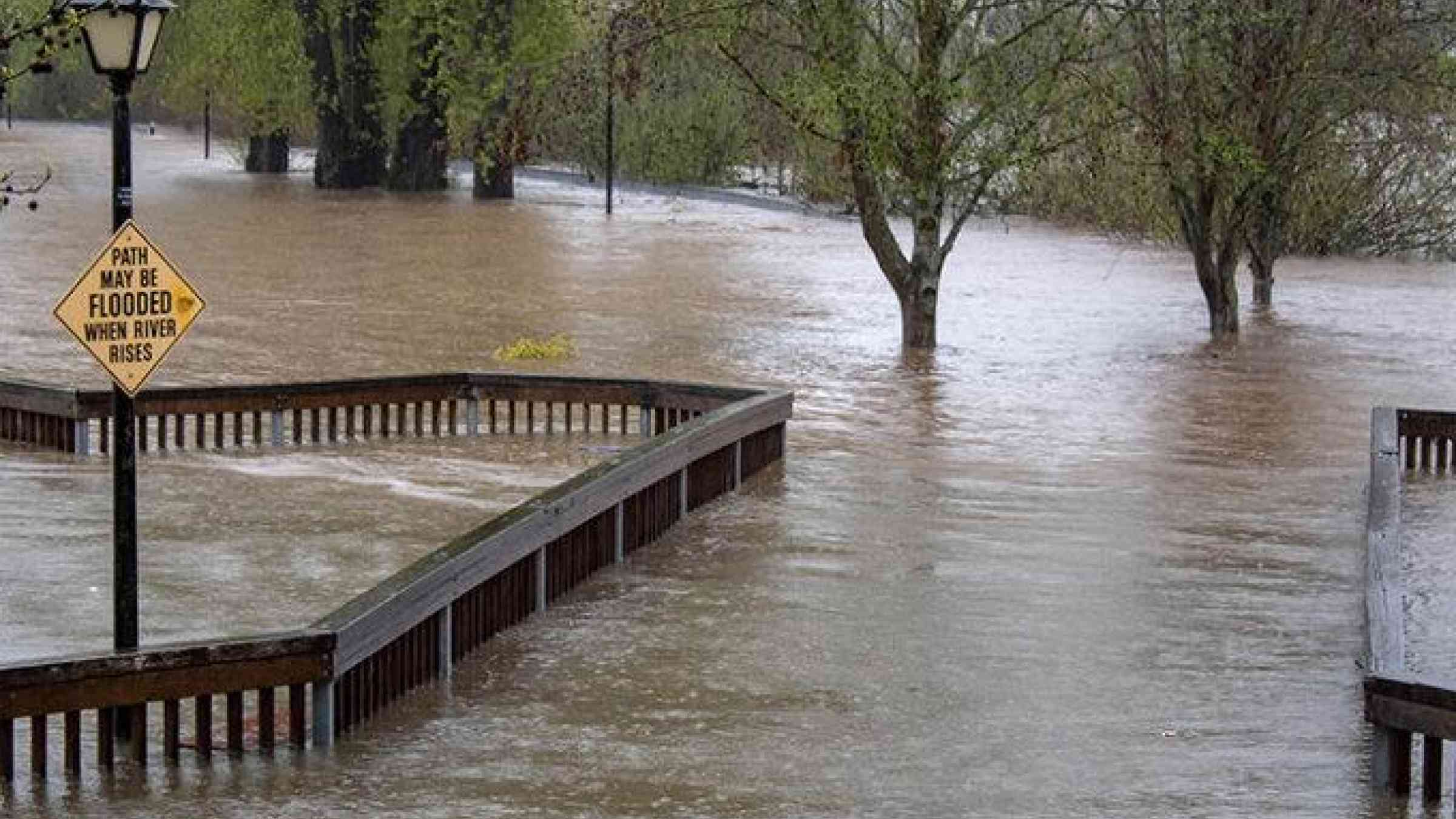Extreme rainfall statistics may shift as U.S. climate warms

Precipitation data and high-resolution modeling suggest that extreme rainfall events under a changing climate will be shorter, more intense, and more widely spread out.
By Sarah Stanley
As the Earth warms, extreme rainfall events are intensifying, thanks in part to the fundamental thermodynamic properties of air. This intensification will likely affect ecosystems and flooding around the world. However, to prepare for it, communities need a clearer understanding of how the timing, duration, and intensity of rainfall extremes will change.
A new study by Moustakis et al. presents a comprehensive assessment of future changes in the statistics of rainfall extremes across the contiguous United States, confirming that extreme events are likely to intensify, and their duration and seasonal timing will shift.
The analysis draws on hourly precipitation data from 3,119 rainfall stations, as well as from high-resolution climate model simulations that are capable of predicting hourly rainfall at a spatial scale of about 4 kilometers. These simulations operate under a scenario in which global greenhouse gas emissions remain high throughout the 21st century.
The results of the study suggest that rainfall extremes will occur more often; on average, what is now a 20-year rainfall event will become a 7-year event across much of the country. Extreme events will also become more intense, with the greatest intensification predicted to occur in the western United States, the Pacific Coast, and the East Coast.
The study also predicts that rainfall extremes will occur more evenly over the course of the year, with the biggest seasonal changes happening in the plains, the Northern Rockies, and the prairies. Meanwhile, the duration of extreme rainfall events is predicted to shorten, with the Pacific Coast experiencing the biggest decrease. These changes could affect the ability of vegetation and soils to absorb water, thus affecting flood risk.
Further observations and model improvements will be needed to refine these predictions, the authors say. Nonetheless, these takeaways from the study could help inform efforts to prepare for future rainfall extremes. (Earth’s Future, https://doi.org/10.1029/2020EF001824, 2021)